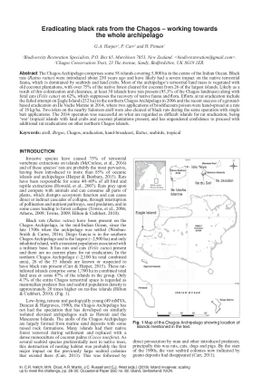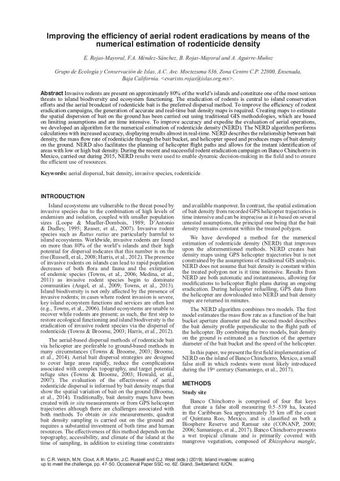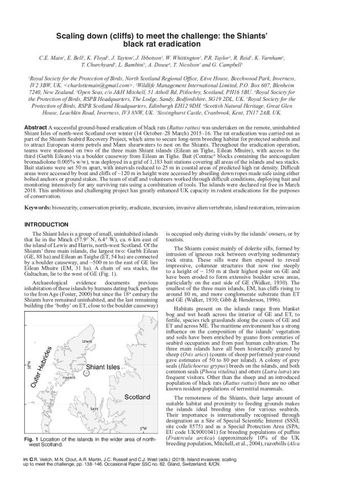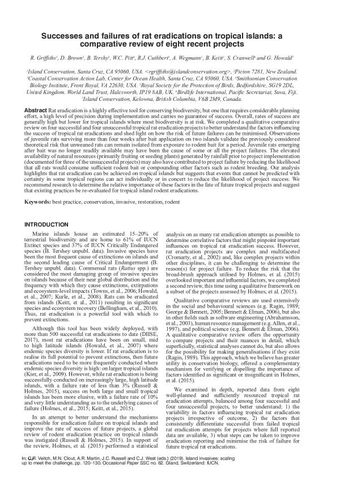Eradicating black rats from the Chagos - working towards the whole archipelago
- Description:
- The Chagos Archipelago comprises some 58 islands covering 5,000 ha in the centre of the Indian Ocean. Black rats (Rattus rattus) were introduced about 230 years ago and have likely had a severe impact on the native terrestrial fauna, which is dominated by seabirds and land crabs. Most of the archipelagos terrestrial land mass is vegetated with old coconut plantations, with over 75% of the native forest cleared for coconut from 26 of the largest islands. Likely as a result of this colonisation and clearance, at least 30 islands have rats present (95.3% of the Chagos landmass) along with feral cats (Felis catus) on 62%, which suppresses the recovery of native fauna and fl ora. Efforts at rat eradication include the failed attempt on Eagle Island (252 ha) in the northern Chagos Archipelago in 2006 and the recent success of a ground-based eradication on Île Vache Marine in 2014, where two applications of brodifacoum poison were hand-spread at a rate of 18 kg/ha. Two islets on the nearby Salomon atoll were also cleared of black rats during the same operation with single bait applications. The 2014 operation was successful on what are regarded as difficult islands for rat eradication, being wet tropical islands with land crabs and coconut plantations present, and has engendered confidence to proceed with additional rat eradications on other northern Chagos islands.
- Display date:
- 2019
- Collections:
- Secretariat of the Pacific Regional Environment Programme (SPREP)
- Publisher:
- International Union for Nature Conservation (IUCN)
- Content partner:
- Secretariat of the Pacific Regional Environment Programme (SPREP)
- Availability:
- Not specified
-
Copyright status: All rights reservedFind out more about what you are able to do with this itemThis item is all rights reserved, with means you'll have to get permission from Secretariat of the Pacific Regional Environment Programme (SPREP) before using it. For more information, please see our use and reuse page.What can I do with this item?Non-infringing useNZ copyright law does not prevent every use of a copyright work, and this item may be hosted by an international institute or organisation. You should consider what you can and cannot do with a copyright work.No sharingYou may not copy and/or share this item with others without further permission. This includes posting it on your blog, using it in a presentation, or any other public use.No modifyingYou are not allowed to adapt or remix this item into any other works.No commercial useYou may not use this item commercially.
Related items
Welcome and warm Pasifik greetings
The information on this site has been gathered from our content partners.
The names, terms, and labels that we present on the site may contain images or voices of deceased persons and may also reflect the bias, norms, and perspective of the period of time in which they were created. We accept that these may not be appropriate today.
If you have any concerns or questions about an item, please contact us.



